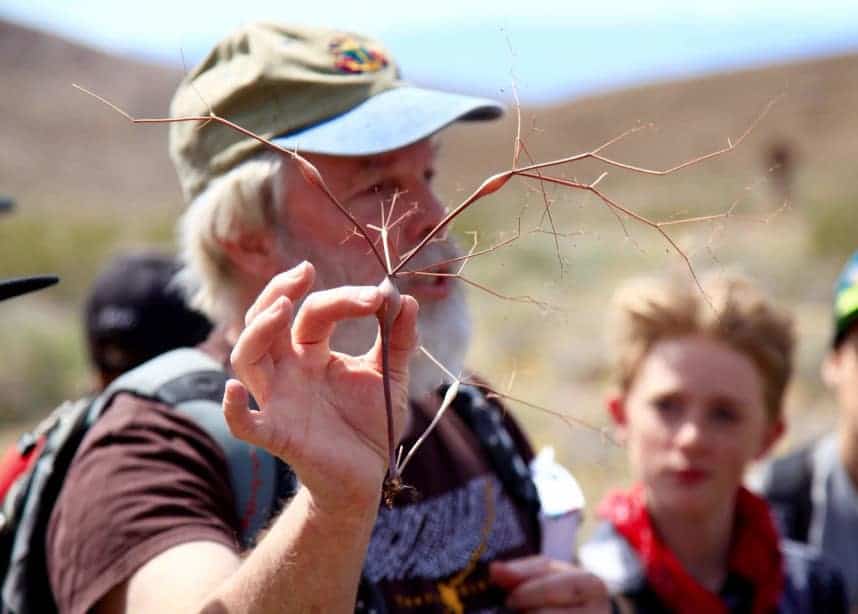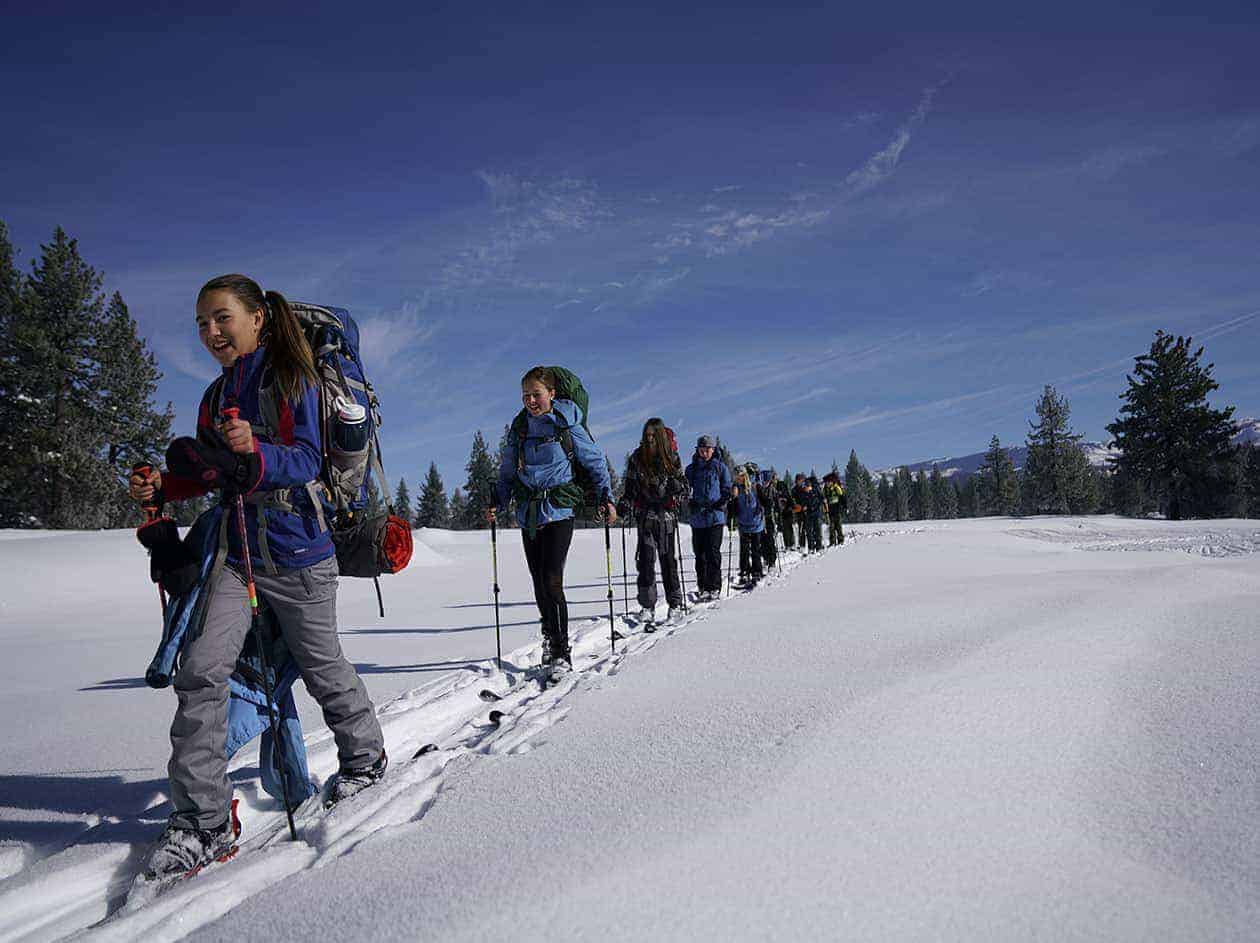Got Character?
this crew of students and teachers hiked 50 miles over 5 days and 4 nights from Meeks Bay to Tahoe City on the Tahoe Rim Trail. Along the way they'd face physical and mental adversity head on.
Learning Target: I can build character.
Constructive Adversity® is an experiential learning approach that uses adverse environments in order to build character, promote ethical thinking, create lasting knowledge, and develop real-life skills. During the immersion of a planned Constructive Adversity cycle, a student expands their Growth Zone. As a result, the students become more comfortable in uncomfortable situations.
The 10 students who participated in our “Got Character” learning intensive this fall experienced all of this first hand…and then some. After all, this intensive was led by Taylor Simmers, our school’s co-founder and the person behind Constructive Adversity at TEA. Along with Lindsey Cunningham, TEA Middle School Crew Leader, this crew of students and teachers hiked 50 miles over 5 days and 4 nights from Meeks Bay to Tahoe City on the Tahoe Rim Trail. Along the way they’d face physical and mental adversity head on.
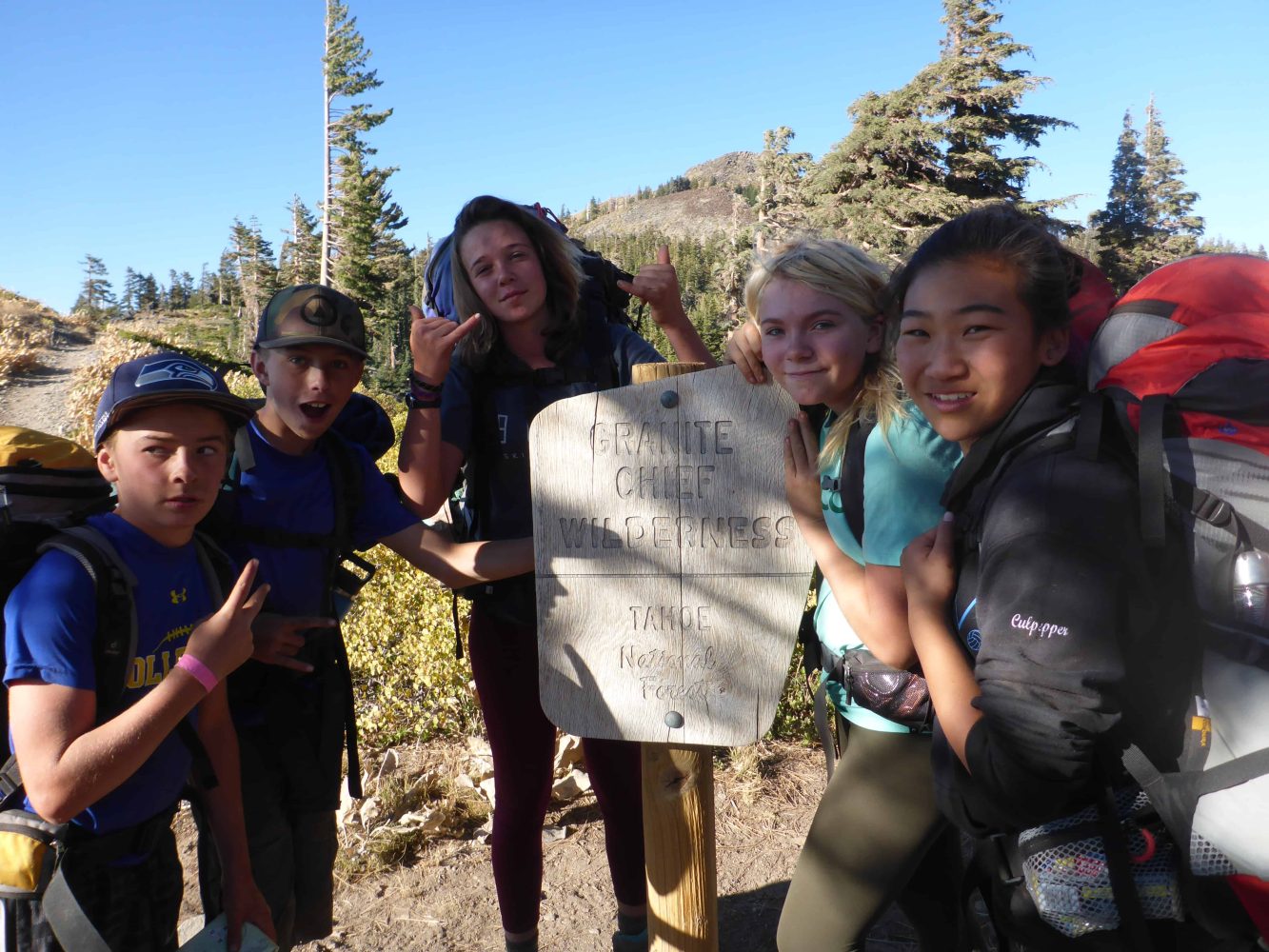
Entering Granite Chief Wilderness area.
Some of the students had never camped in the backcountry. Some of the students didn't know they were signing up to hike 50 miles.
Before the Got Character learning intensive, the students didn’t know much about TEA’s 8 character traits (stewardship, advocacy, gratitude, empathy, creativity, collaboration, responsibility, and perseverance). They didn’t know much about the Tahoe Rim Trail. Some of the students had never camped in the backcountry. Some of the students didn’t know they were signing up to hike 50 miles. But they did know that they were going to build character on this experience.
To get to the trailhead, the students traveled to Meeks Bay from the North Tahoe Marina on speed boats. This would be the most enjoyable part of the trip, by far. After their boat ride, the students strapped their heavy packs to their backs and set off on their 50-mile hike. The scenery from the trail was absolutely stunning. Not only were the students hiking a portion of the Tahoe Rim Trail, this was also a section of the Pacific Crest Trail (PCT), a route that spans from Mexico to Canada. The PCT passes through the Tahoe basin on our western slope, in an area called Desolation Wilderness.
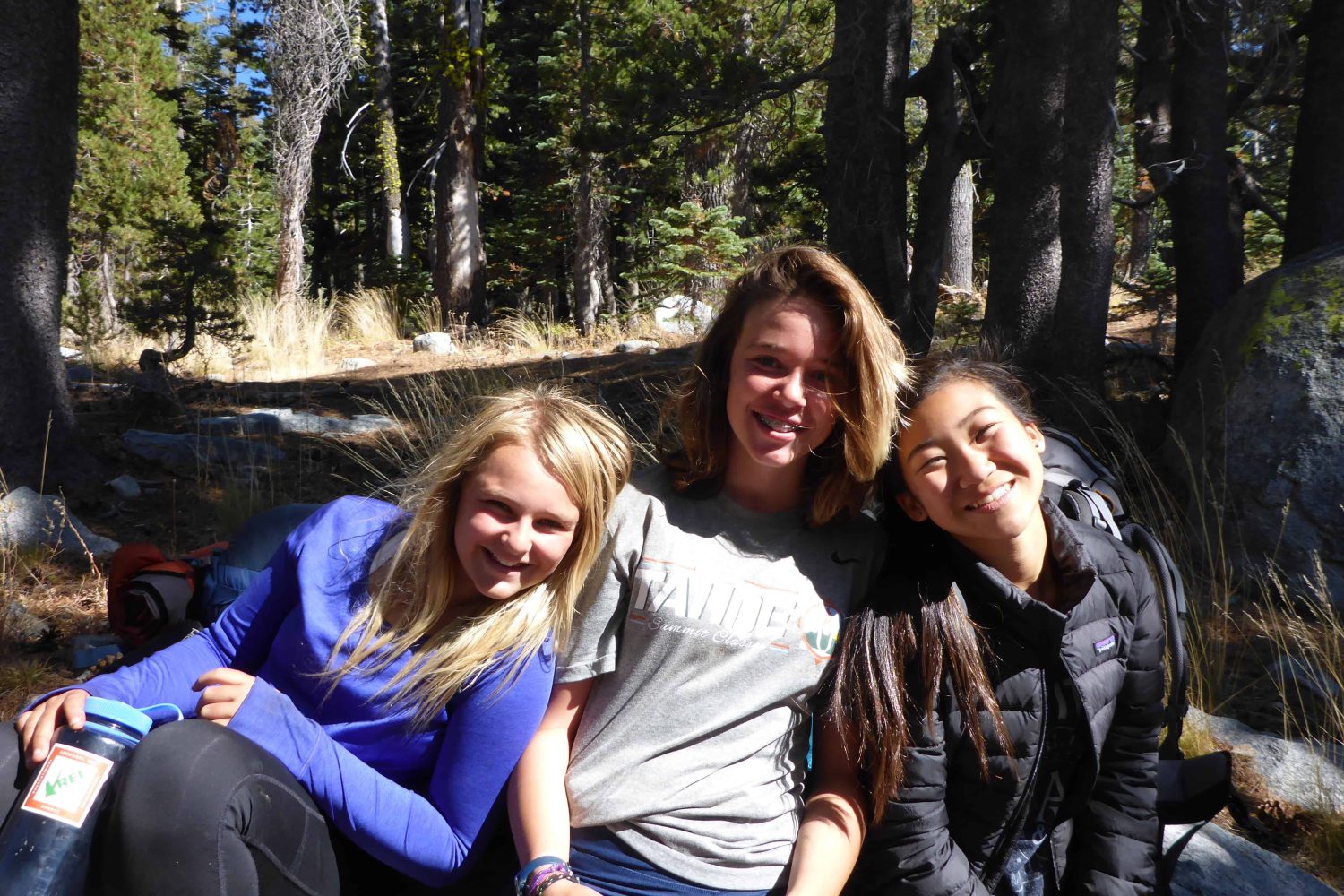
Keeping spirits high despite facing considerable adversity on the trail.
And while the scent of fall in the Sierras filled the air, so did the smell of sweat.
On the trail, students often passed the time by singing songs (when not gasping for air). When they weren’t singing, you could hear the birds chirping, boots crunching branches, and backpack frames groaning from the weight of the load. And while the scent of fall in the Sierras filled the air, so did the smell of sweat. Constant elevation changes on the trail made bodies hurt and feet ache while pushing everyone to their physical limits.
During a small section of the trail in the middle of the hike, the trip leaders directed the students to hike and navigate a 4-mile section on their own, while tied together with an “empathy” rope. Attached to the rope, students were forced to stick together while navigating every last obstacle as a cohesive unit.
And as it turned out, the students encountered a wasp nest during their 4-mile solo hike. These two students took a moment to reflect on that “solo” experience.
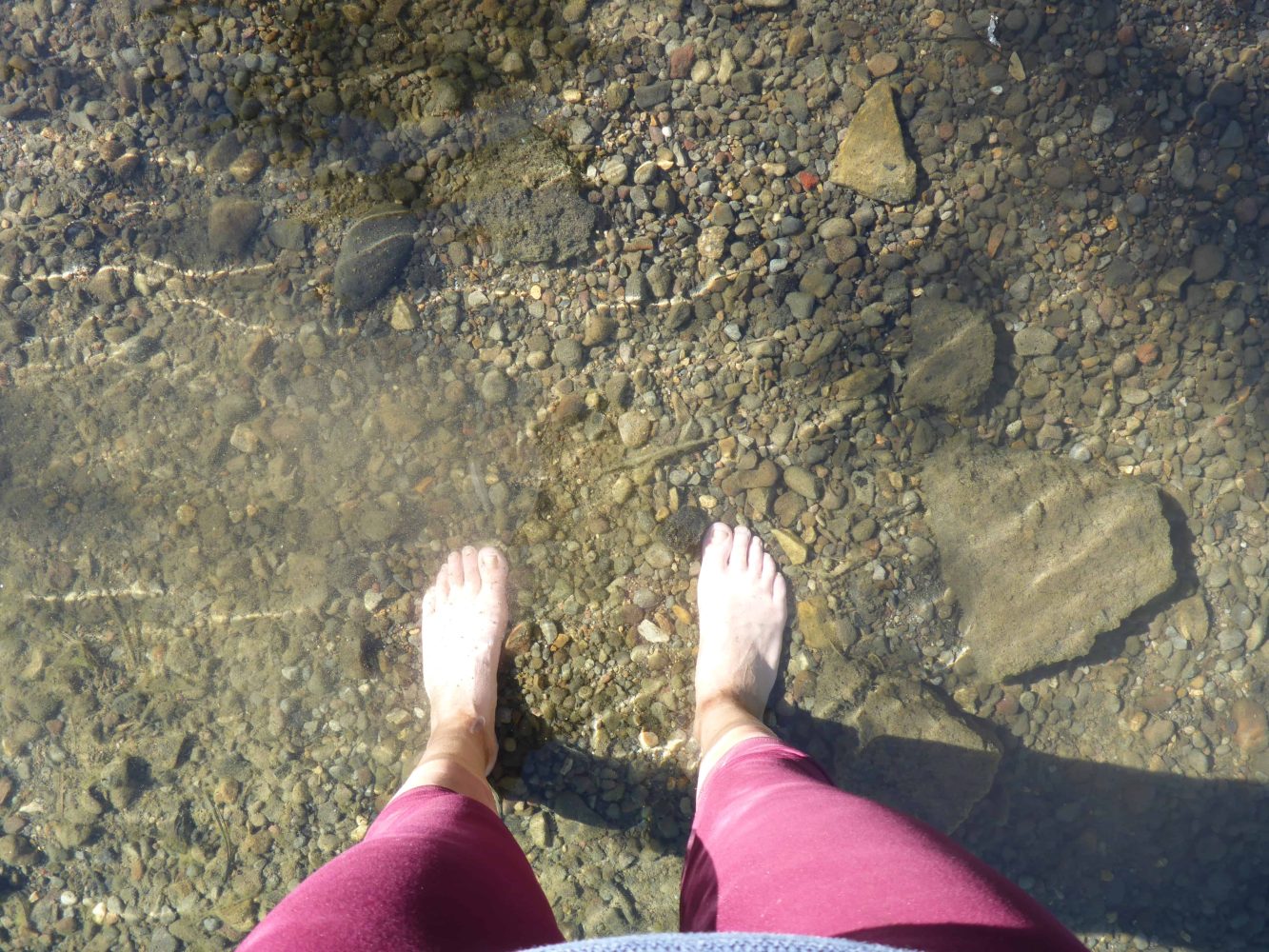
What sweet relief!
Each student came away with a strong understanding of each of TEA's character traits.
But it wasn’t all blood, sweat, and tears (and bee stings). When the students stopped for lunch or to set-up camp, the students would again break out into songs to cheer each other up. When a student was struggling, they would cheer each other on. As the experience progressed, the crew learned how to persevere and pushed forward as a team. During these moments you could see the crew bonding and friendships forming.
After the trip was over, the crew gathered to reflect on the trip (over the best pizza of their lives at Front Street Pizza in Tahoe City). They discussed what they had learned. Each student came away with a strong understanding of each of TEA’s character traits.
They learned to be stewards of our land while acting responsibly on the trail. They advocated for one another and expressed gratitude openly around the camps. They empathized with one another when talking about the physical and mental pain they were all feeling. Students collaborated to set-up and break-down camps and meals multiple times each day. And when a problem surfaced, they came up with creative solutions that are necessary when you’re deep in the backcountry. And most of all, they persevered considerable physical and mental pain during just about every moment of the trip.
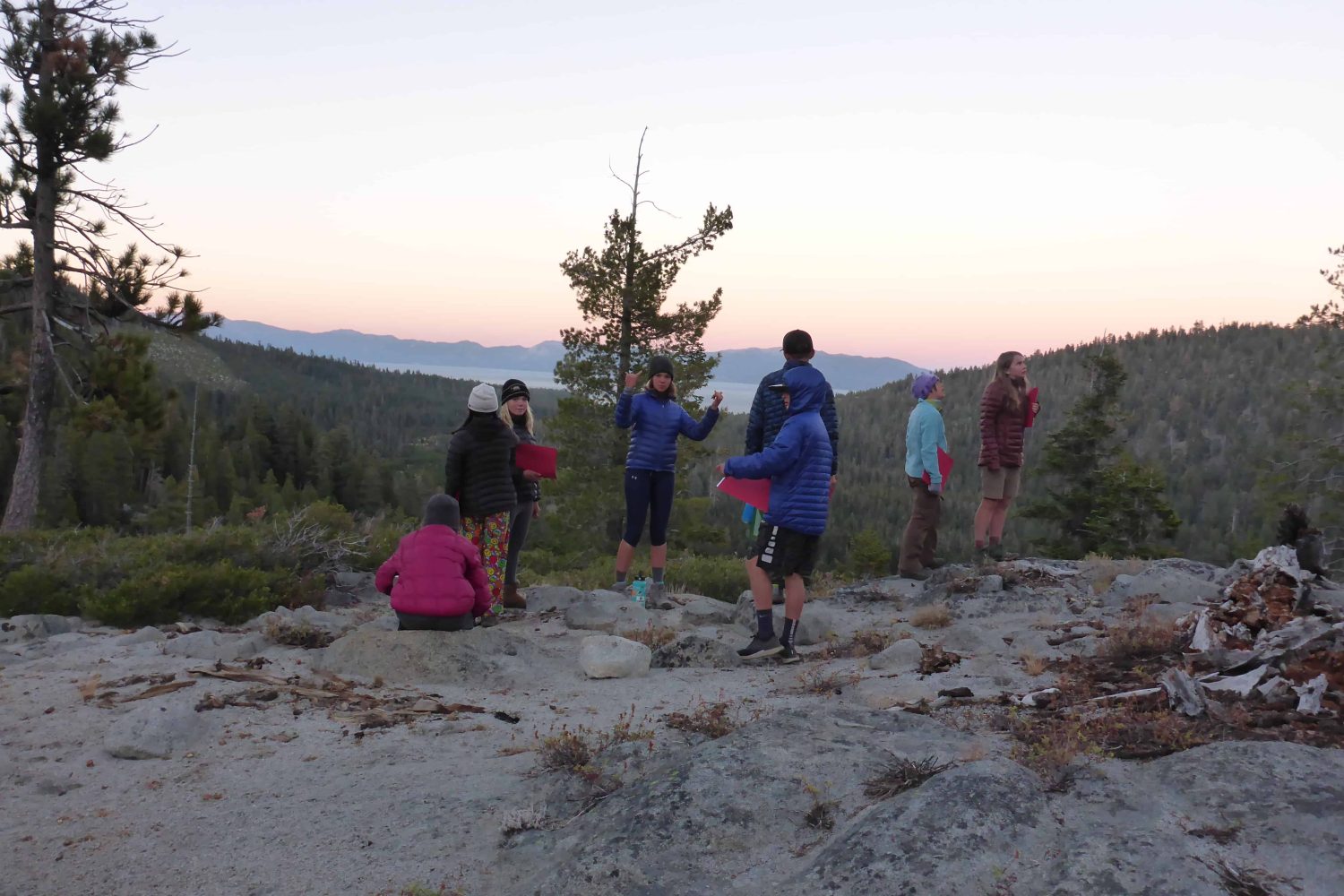
We out there. Way, way out there.
